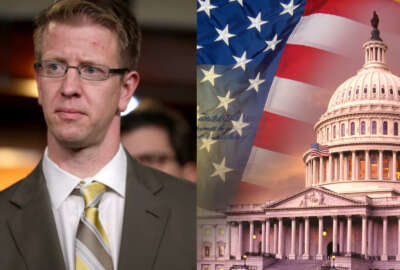
Insight by Booz Allen Hamilton
How agencies can ‘think big, start small, learn fast,’ and invent the future
The technologies that will be groundbreaking 30 years in the future have their roots in decisions being made today. With the right perspective, federal agencies are...
This content is provided by Booz Allen Hamilton.
Emerging technologies like artificial intelligence or edge computing are rapidly becoming ubiquitous throughout the federal government, and have the potential to completely redefine the way agencies achieve their missions. But what lies beyond the bleeding edge? The technologies that will be groundbreaking 30 years in the future have their roots in decisions being made today. With the right perspective, federal agencies are uniquely equipped to start shaping what that future looks like.
Tim Andrews, civil government leader at Booz Allen, has an approach that can help them do exactly that.
“This isn’t about crystal balls,” Andrews said. “It is about seeing the inevitability of major capabilities that will be available two to three decades out, and how you should act today to be in a position to make the best use of these fantastic building blocks of the future to advance your mission. The key is to look for nonlinear or exponential trends in the development of technological capabilities. Over longer timeframes, like two or three decades, these capabilities will dominate.”
This is the difference between people like Alan Kay, who helped build the foundation of modern computing back in the 1960s and 70s, and Ken Olson, CEO of a computer company in the 1980s who said he couldn’t see a need for personal computers. What Olson failed to recognize was that personal computers were doubling in power every 18 months.
“This is simple math, but surprising to our human minds,” Andrews said. “If something grows linearly in capability by say 10% per year, in 30 years it will have 17.5 times more. If something doubles every 18 months — an exponential growth rate — it will have a million times more in 30 years.”
This same dynamic played out in the late 2000s, when Blackberry discounted the first iPhone. So how can federal agencies learn to spot the next big thing?
The first step is identifying technologies that are improving exponentially. Andrews said to look for these in technologies with broad impacts: biology, communications, energy, information, sensors and transportation. Also, look at where these technologies intersect in order to power the technologies of the future. For example, advances in sensors, computing, AI and communications technology like 5G all come together to make autonomous cars a possibility.
“Look at research labs of the major academic and corporate institutions around the world. This is where you can find early glimmers of exponential capabilities,” Andrews said. “For example, computing power has been increasing exponentially since the 60s; this rate of increase shows no signs of declining in the next few decades. And that’s if quantum computing doesn’t pan out. What could you do with a million times more computing power?”
One place where Andrews sees this beginning to coalesce is biology. Cheaper, more efficient genome sequencing along with major proofs of concept like the COVID-19 vaccines, which were developed in record time, signal the earliest days of a biological revolution.
The second step comes from Alan Kay: imagine the future 30 years from now, based on these technologies. What does it look like? What steps connect the present with that future? Creating this “future history” can provide a set of intentional steps to begin working toward making this happen.
“Alan Kay taught us a very effective mechanism to elicit ideas for writing future histories. Start by asking the question ‘wouldn’t it be crazy if we couldn’t do X, or we didn’t have y in 20 or 30 years?’ This helps break the spell of the present and get us to clearly perceive the enormous effects of these technological capabilities,” Andrews said. “For Alan and his colleagues, it went something like ‘wouldn’t it be crazy if we didn’t have cheap tablet computers with high resolution displays, connected via superfast wireless networks to a global network of information and exchange?’ Then they wrote more detailed future histories.”
The third and final step is to start acting on small projects. This creates options that allow you to adjust to the actual pace of advancement and avoid investing too much too early, creating legacy capabilities that inhibit modernization. These experiments can also provide direction and opportunities to learn what comes next.
For example, take tax refund or Medicare claims fraud.
“Taking into account that computing will be at least a million times more powerful in 30 years, what might we do with elastic cloud computing?” Andrews asked. “We can buy enormous amounts of computing power for very brief times at low cost, enabling us to live in the future and try small experiments, perhaps using what seems today enormous computing capability to try out advanced AI to check every tax refund and Medicare claim as they are processed, maybe even several times with several algorithms to prevent most fraud before a payment is made.”
This approach is often expressed as “think big, start small, learn fast,” and can help federal agencies learn to shape the future.
“The old joke goes prediction is hard, especially about the future,” Andrews said. “We agree. Don’t predict, but rather invent your desired future to improve your missions.”
Copyright © 2024 Federal News Network. All rights reserved. This website is not intended for users located within the European Economic Area.
Related Stories




